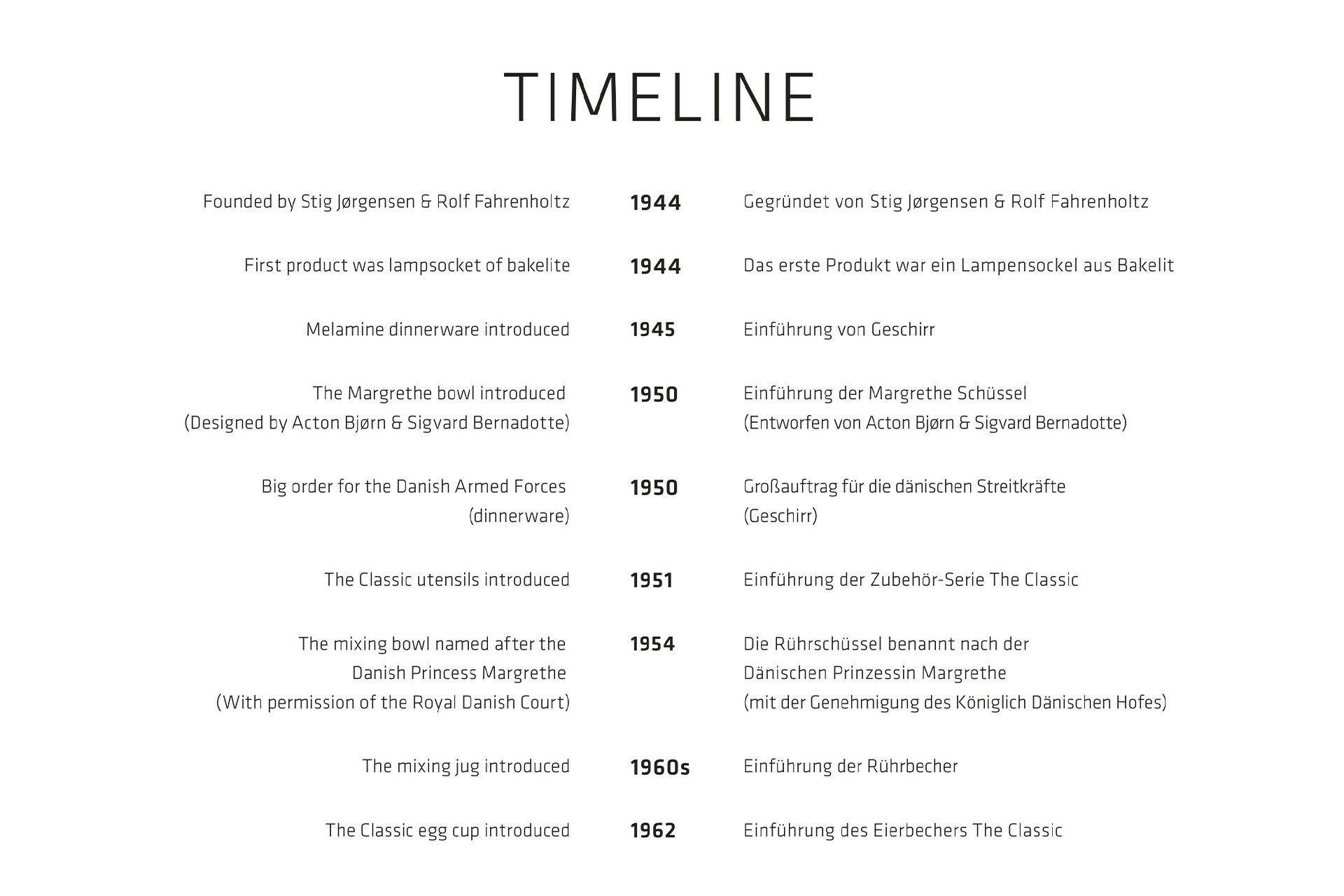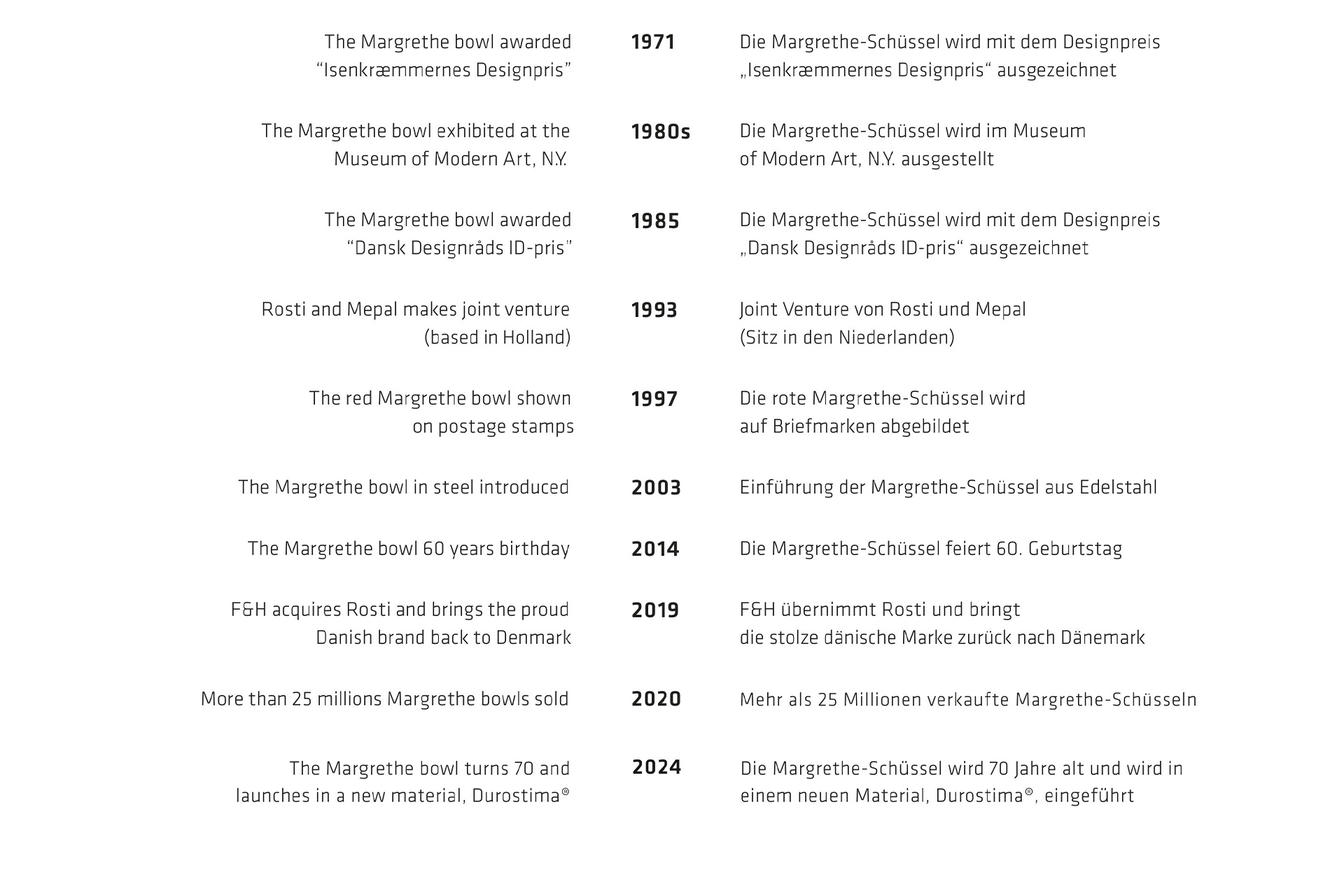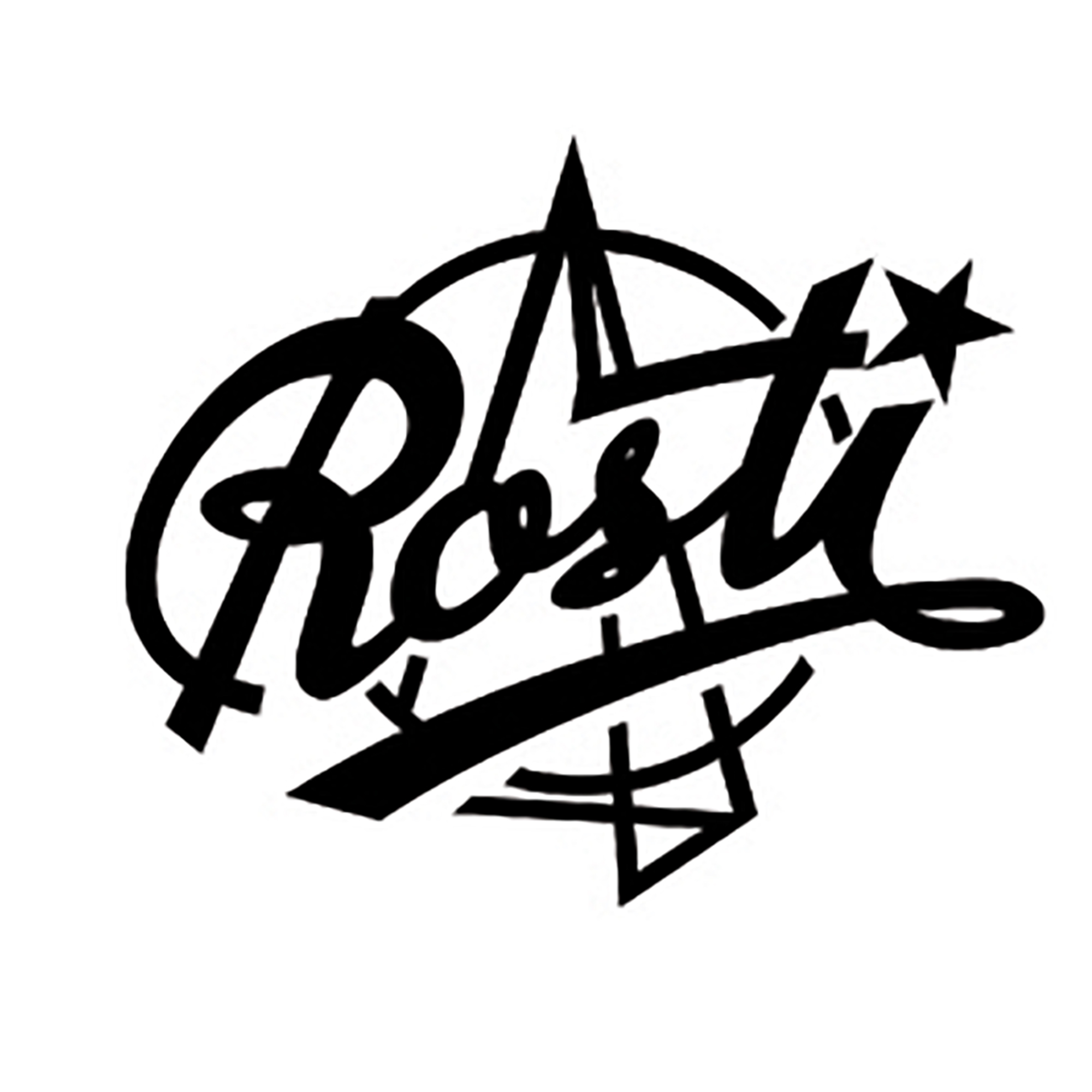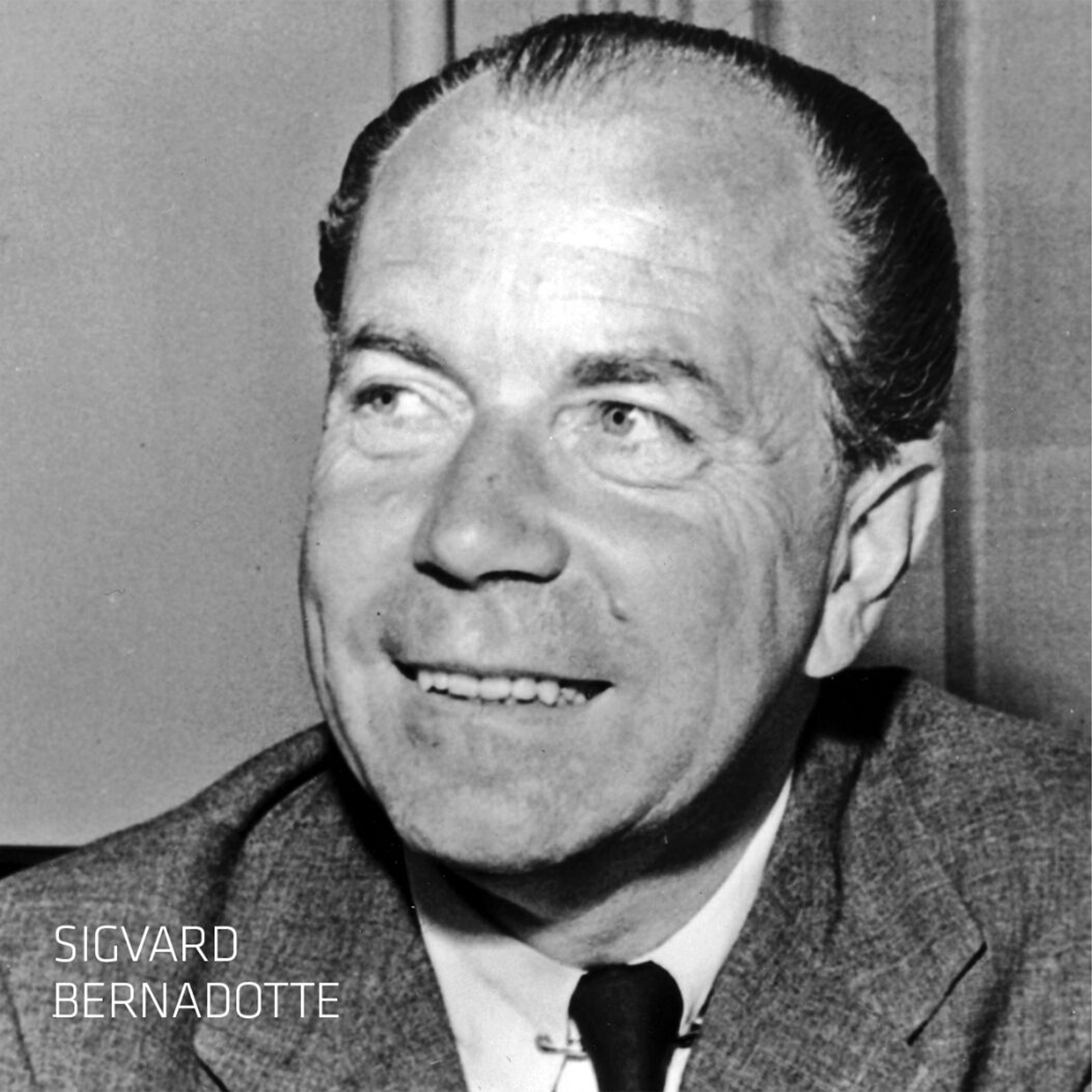ROSTI - From backroom to international company





The fairy tale of the Margrethe bowl
Rolf Fahrenholtz and Stig Jørgensen wanted to expand Rosti's melamine range with a set of mixing bowls. In 1947, Rosti bought samples of mixing bowls in every conceivable size, shape and material and asked a large number of housewives about the advantages and disadvantages of the bowls. The results showed that housewives wanted a curved bowl that was roomy and high enough to allow beating and stirring without the contents spilling over the edge. The bowl also needed to have a pouring lip and a good handle for perfect use.
The next step was to find a designer who could reconcile these requirements with a timeless and functional design. The choice fell on the design studio of Acton Bjørn and Sigvard Bernadotte in Copenhagen, at that time one of the few studios in Scandinavia that dealt with industrial design. Not much money was available as a fee, so according to the studio's internal instructions, not much time was to be spent on the commission. Fortunately, the designers got it right first time, and with four color suggestions for a small extra charge, the job was done. Rosti now had a bowl that combined function, quality and design.
Named after a niece
The bowl went into production in 1950. A few years later, Sigvard Bernadotte wanted to give it a special name. Bernadotte was the son of the Swedish King Gustav VI Adolf, the brother of the Danish Queen Ingrid and thus the uncle of Princess Margrethe. In 1953, the law on the succession to the Danish throne was changed, and suddenly the 13-year-old Margrethe's name was on everyone's lips. Bernadotte asked the Danish court for permission to use the princess's name for the bowl. He was granted permission, and the next year the bowl was given her name: the Margrethe Bowl. The bowl was subsequently launched at Christmas 1954 in three sizes, 2, 2.5 and 3 liters, in white and the pastel colors yellow, blue and green. The collection was expanded in the 1960s to include many different sizes and colors and the bowls were fitted with rubber rings on the bottom. Lids were also produced for all bowl sizes. The Margrethe mixing bowl became a multi-award-winning classic of Danish design, was printed on stamps and was even given a place in the permanent collection of the Museum of Modern Art in New York. More than 25 million Margrethe bowls have been sold worldwide.




